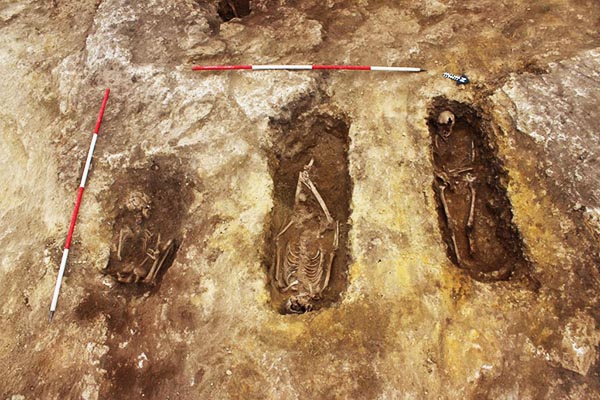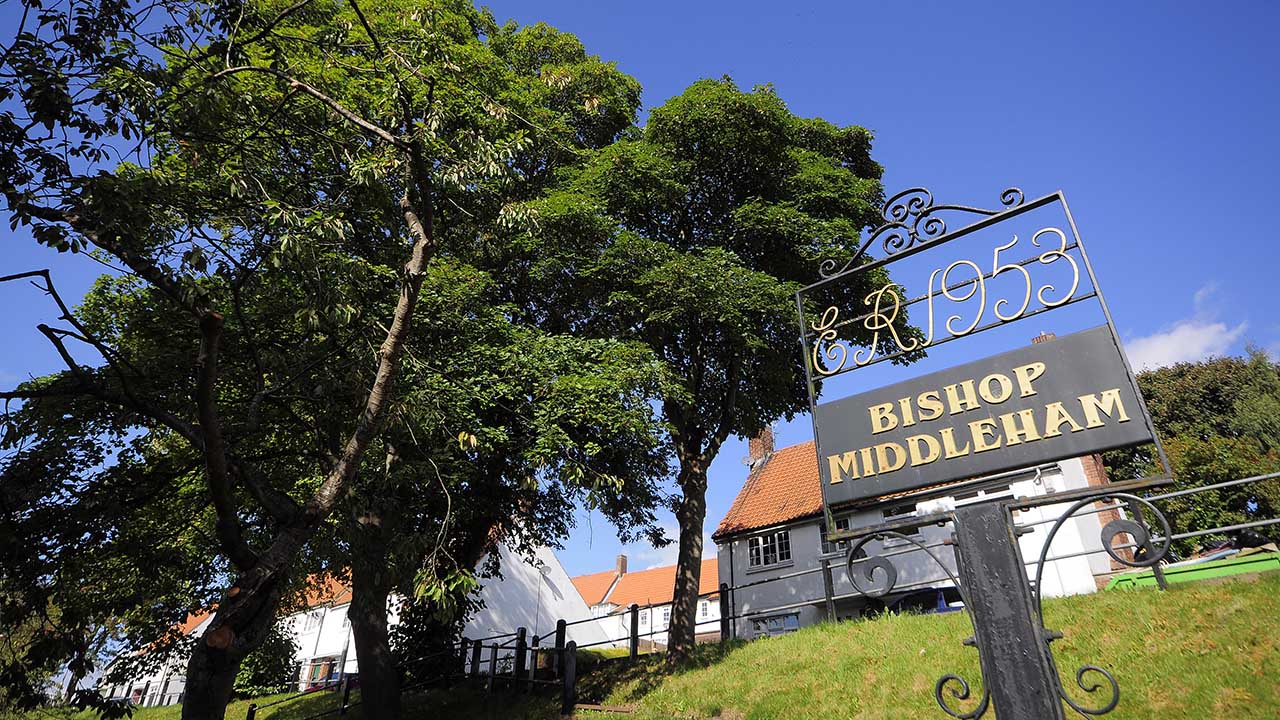
History
The villages of Bishop Middleham & Mainsforth lie in a valley 9 miles South East of Durham and have a rich history dating back millennia. The area is dominated by beautiful open countryside and rich biodiversity with areas of outstanding beauty and historic sites of national importance.
In a recent Parish survey, residents expressed how much they valued the environment and heritage within their community, but also how keen they were to progress with the times. Out of this feedback came our Parish logo and vision statement: Conserving our past : building our future. You will see that there is a lot going on in this vibrant community with everything either helping to conserve or educate about our heritage or to modernise and help build our future. Whether you’re attending events or just getting out and about enjoying one of the many walks, with maybe a nice pub lunch at the end, we hope you enjoy being in and around our community.
Although much of County Durham had probably first been settled in the Mesolithic period, the first evidence for occupation in the parish dates to the Neolithic or Bronze Age. At least two simple flint tools, including an arrowhead, have been found in the area. The arrowhead was probably used by an early hunter, though by the Bronze Age farming would have been widespread. By the Iron Age we have our first evidence for burials in the parish- at least six graves were found in a small cave. A small glass bead decorated with white spiral patterns may also have come from an early or middle Iron Age grave.
It is clear that Bishop Middleham was on an important Roman period routeway; the road known as Cades Road runs through the centre of the parish. Despite the presence of this important communication route, no Roman buildings have been found in the parish. Nonetheless several other Roman objects have been uncovered in the area, including a small bronze statue of a Roman god. More unusually a group of four Roman pans stacked one inside each other have also been discovered. They were decorated so as to give them a silver appearance. It is possible they may have had a religious use, as such pans are often shown carved on the site of Roman altars.
The discovery of these objects and the small statue may suggest that an as yet undiscovered Roman temple is still to be found. There is little hard evidence for Anglo-Saxon settlement in the parish, though as Middleham is an Old English name for ‘middle settlement or farm’ there was certainly some kind of occupation in the area by the 9th or 10th centuries. In 1146 Osbert, the nephew of Bishop Flambard, gave the Church of Middleham to the Prior and Convent at Durham, this is the first recorded mention of the village.
In 1183 the Boldon Book, a survey of all the land owned by the Bishop of Durham, records that there were some 32 households in the village, which was surveyed along with neighbouring Cornforth. The survey was particularly detailed and names a number of individuals such as Arkil, Ralph and William the Headborough.
Bishop Middleham was one of the favourite residences of the Bishops of Durham, two of whom died here. The residence of the Bishops now only survives as earthwork remains. By the late 14th century the Bishop of Durham appears to have no longer used the Castle as a residence and the buildings and land were let out at first to his bailiff. By 1509 this was a man named John Hall who enjoyed a lease of 31 years.
The castle and deer park passed through a number of hands over the following centuries including the Eure family of Witton Castle, the Freville’s and by the 18th century the Surtees family which included the notable historian Robert Surtees, who lived nearby at Mainsforth and wrote on the village and Castle in his History of Durham in 1823. He is buried in Bishop Middleham church. By the 19th century the contained four public houses, a brewery, and a few tradesmen’s shops. The village mainly supported itself by farming, though there was some coalmining; the remains of a wagonway have been recorded. The main railway line also ran close to the village.
Brightwater

If you’re sat there asking where is Brightwater and why haven’t I heard of it? Well it’s probably been beneath your wellies without you realising it!
You can Discover Brightwater by following the Ancient River Skerne as it stretches north from Darlington and includes and includes the town and villages of Newton Aycliffe, Sedgefield, Bishop Middleham, Fishburn and the Trimdons via Hurworth Burn Reservoir.
An interesting report about Bishop Middleham
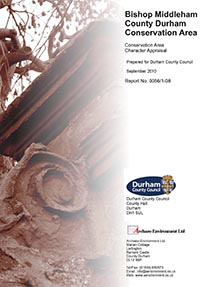
Bishop Middleham is a Conservation Area based around a village green, but which may have originally grown up around the Bishop’s Castle to the south. The village displays considerable civic pride with a welcoming monument, a Millennium Garden and a wildlife park.
The conservation area consists of two main character areas, one based around the Church with an agricultural character and another based around the village green.
Parish Plan

The last village appraisal, produced in 2003, provided a valuable snapshot of residents’ views. Issues and priorities change over time, and by 2010, when a review was well overdue, a significant event prompted the decision to prepare a new Parish Plan with a wider scope than before.
In January 2010, a proposal to build a major housing development of 130 houses in Bishop Middleham
galvanised some concerned residents into forming a group to challenge this. After a lengthy campaign,
the application was eventually turned down by the planning inspectorate on grounds of unsuitable
design and not in keeping with the character of the village. [Extract]
Wildlife Garden Management Plan

Bishop Middleham Wildlife garden lies to the south of Bishop Middleham village in a low-lying valley part of a leisure facility called the park. The nature reserve boundary to the north is situated adjacent to St Michael’s Church with the play grounds and football pitch to the east.
The site lies within the a very important natural character area the Durham Magnesium Limestone Grassland Plateau a series of diverse wetlands and pasture system surrounding the village attracting an important community of flora and fauna. [Extract]
WORLD WAR 1 Commemoration 2014
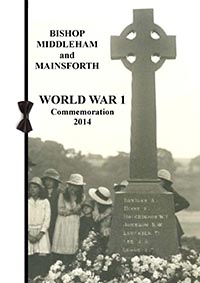
The War Memorial in St Michael’s Churchyard commemorates those who died in both World Wars. When research for this book began it was decided to focus on the men who laid down their lives in World War 1, and to consider the experience for those left at home.
There is much more to be discovered about those who lost their lives in World War 2. [Extract]
Conservation Area Appraisal
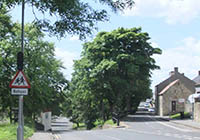
A Conservation Area Appraisal represents the first phase of a
dynamic process aimed at the conservation and
enhancement of the conservation area. It is an assessment
of those features and qualities that make an individual
conservation area special.
These can include individual
buildings, groups of buildings, other structures, architectural
details and materials, open spaces, landscaping, street
furniture, and the relationships between all of these.
This
appraisal will help to raise awareness and appreciation of
Bishop Middleham’s special character, while also providing a
consistent and evidential basis on which to determine
planning applications affecting the village. [Extract]
 We’ve had three brilliant weeks investigating the ruins of Bishop Middleham Castle. So what have we found? Here’s what we think it all means…
We’ve had three brilliant weeks investigating the ruins of Bishop Middleham Castle. So what have we found? Here’s what we think it all means…